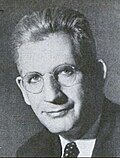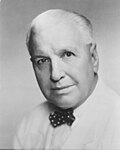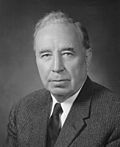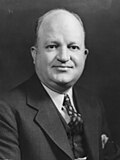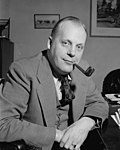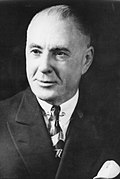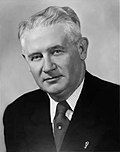November 2, 1948 | ||||||||||||||||||||||||||||||||||||||||
33 of the 96 seats in the United States Senate 49 seats needed for a majority | ||||||||||||||||||||||||||||||||||||||||
|---|---|---|---|---|---|---|---|---|---|---|---|---|---|---|---|---|---|---|---|---|---|---|---|---|---|---|---|---|---|---|---|---|---|---|---|---|---|---|---|---|
| ||||||||||||||||||||||||||||||||||||||||
 Results of the elections: Democratic gain Democratic hold Republican hold No election Rectangular inset (Louisiana): both seats up for election | ||||||||||||||||||||||||||||||||||||||||
| ||||||||||||||||||||||||||||||||||||||||
The 1948 United States Senate elections were held concurrently with the election of Democratic President Harry S. Truman for a full term. The 32 seats of Class 2 were contested in regular elections, and one special election was held to fill a vacancy. Truman campaigned against an "obstructionist" Congress that had blocked many of his initiatives, and additionally, the U.S. economy recovered from the postwar recession of 1946–1947 by election day.
Contents
- Results summary
- Gains, losses, and holds
- Retirements
- Defeats
- Post election changes
- Change in composition
- Before the elections
- Election results
- Race summaries
- Special elections during the 80th Congress
- Elections leading to the next Congress
- Closest races
- Alabama
- Arkansas
- Colorado
- Delaware
- Georgia
- Idaho
- Illinois
- Iowa
- Kansas
- Kentucky
- Louisiana
- Louisiana (regular)
- Louisiana (special)
- Maine
- Massachusetts
- Michigan
- Minnesota
- Mississippi
- Montana
- Nebraska
- New Hampshire
- New Jersey
- New Mexico
- North Carolina
- North Carolina (special)
- North Carolina (regular)
- Oklahoma
- Oregon
- Rhode Island
- South Carolina
- South Dakota
- Tennessee
- Texas
- Virginia
- West Virginia
- Wyoming
- See also
- References
- Further reading
Thus, Truman was rewarded with a Democratic gain of nine seats in the Senate, enough to give them control of the chamber. This was the first time since 1936 that Democrats posted a net gain of seats in the chamber. [1] [2] This was the last time until 2020 that Democrats flipped a chamber of Congress in a presidential election cycle.
















